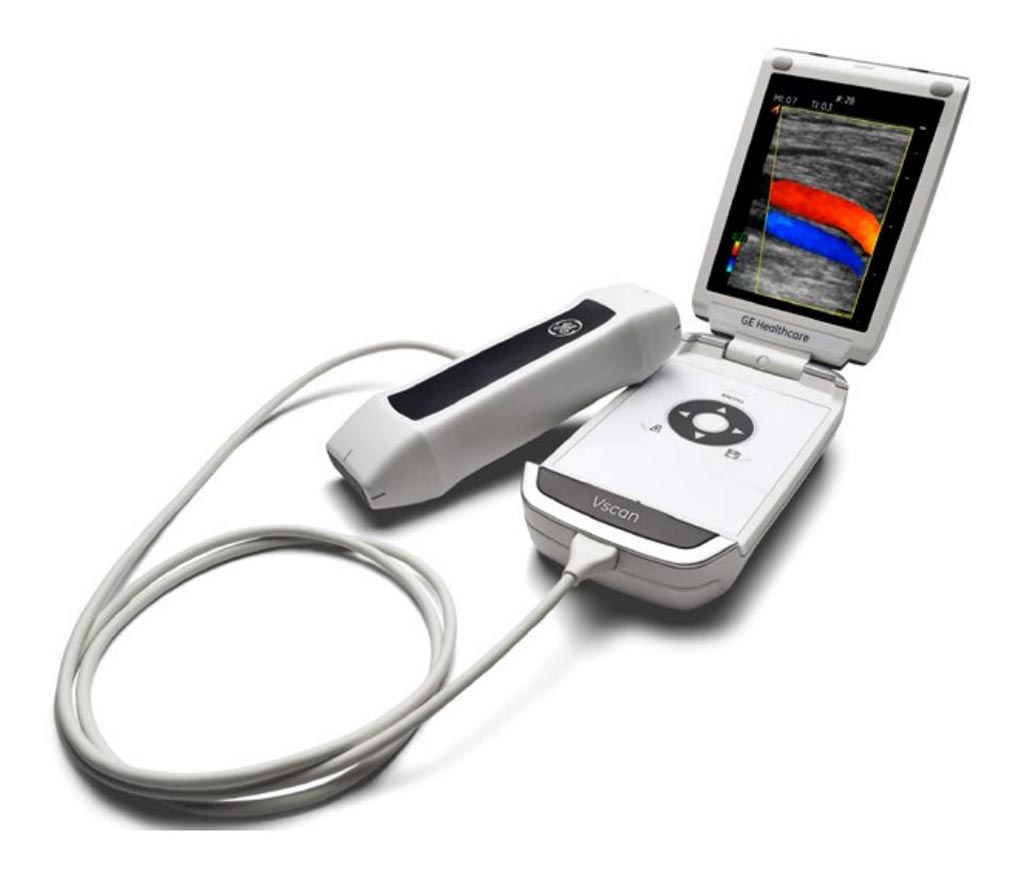Handheld Scanners Market to Reach USD 725 Million by 2027By HospiMedica International staff writers[16 Oct 2017]  |
|
| The global handheld ultrasound scanners market is projected to grow at a robust CAGR of 8.8% from around USD 311 million in 2017 to about USD 725 million by 2027 end, driven mainly by the increasing use of handheld ultrasound scanners among non-radiologists and modernization in healthcare, coupled with high investment in research and development (R&D). These are the latest findings of Future Market Insights (Valley Cottage, NY, USA), a market intelligence and consulting firm. Some of the key growth drivers of the global handheld ultrasound scanners market are technological advancements, innovations and developments in medical imaging devices and ultrasound scanning, increasing use of handheld ultrasound scanners in emergency medical services, rising healthcare expenditure, changing healthcare pattern, and rising prevalence of chronic disorders. The market growth is also being fueled by increasing number of medical device manufacturers, rising product penetration due to the adoption of distribution and licensing agreements by various players, benefits of international trade agreements, higher imports of imaging diagnostics systems, and rising focus of healthcare companies on inorganic growth. However, limited R&D in some areas, rising consumption tax, shortage of skilled professionals, non-standardized product pricing and sale of counterfeit medical devices are likely to act as constraints to the growth of the global handheld ultrasound scanners market. By display type, the color display segment is projected to record the highest growth during the forecast period with a CAGR of 9.5% to reach a market value of about USD 460 million by the end of 2027. By modality type, the wireless scanners segment is poised to record the highest CAGR of 10.1% during 2017-2027, while the wired scanners segment is expected to register the highest market value by the end of the forecast period. By end-user category, the hospitals segment has been dominating the handheld ultrasound scanners market since 2012 and is expected to remain the largest segment in terms of market value. The hospitals end-user segment is projected to grow at the highest CAGR of 9.3% throughout the forecast period of 2017-2027 to reach USD 280 million. The diagnostic centers segment has been gaining traction since 2016 and is the second-fastest growing end-user segment of the handheld ultrasound scanners market. The use of handheld ultrasound scanners among ambulatory surgical centers (ASCs) has also picked up recently. As a result, the ASCs end-user segment is also expected to record a high growth rate during the forecast period and achieve a significant market value. By region, North America is expected to dominate the global handheld ultrasound scanners market and is projected to grow at the highest CAGR of 9.5% throughout the forecast period to surpass USD 330 million by the end of 2027. The diagnostic centers segment is expected to be the fastest growing segment in North America, followed by the hospitals segment. In Western Europe, the hospitals segment leads the market and is projected to achieve a market valuation of USD 48.3 million by 2027 end. After North America, Asia Pacific (excluding Japan), is expected to achieve the second-highest market valuation during 2017-2027, surpassing even the Western and Eastern European regions. Japan is projected to record the second-highest growth rate in the coming years owing to favorable government regulations and increased developments in its healthcare domain. The hospitals segment is growing at the fastest pace in Japan as compared to other regions, with a projected CAGR of 9.9% during 2017-2027. However, the adoption of handheld ultrasound scanners in hospitals, ASCs and diagnostic centers is comparatively lower in the Middle East and Africa region, resulting in lower revenues from the region by 2027. Related Links: Future Market Insights |
|